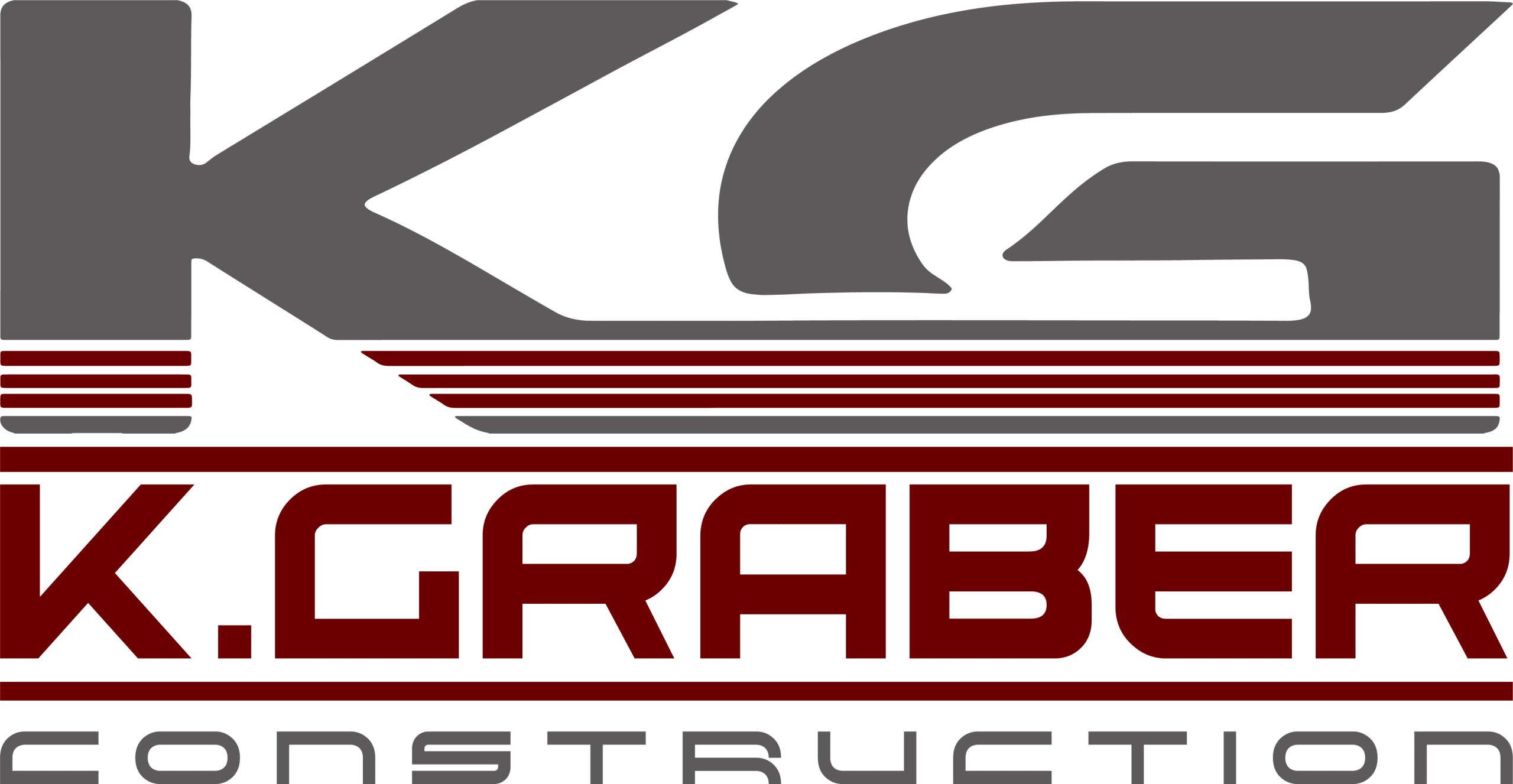Comparing Metal Roofing Options: Stone Coated, Corrugated, and Standing Seam
Metal roofing – it’s not that rattly rusty tin roof anymore! Today’s modern, engineered metal roofing options provide high-quality, durable, colorful roofing options.
This blog will compare metal roofing options, including corrugated, standing seam, and the new stone-coated panels on the market.
At K Graber Construction, we build anything! No matter the challenge, we have the skills, experience, and professionalism to tackle any project you throw at us. Roofing is one of our specialties, and we hope this blog will help you understand the differences between metal roofing options.
Are you ready? Let’s get started!
The Evolution of Metal Roofing
Metal roofing in the United States is relatively new. According to the National Park Service, metal roofing in America wasn’t widely used until the 19th century. Before that, copper and lead were the only metals commonly used in roofing applications.
Standing seam copper sheets covered some of the more notable early American roofs, including Christ Church in Philadelphia. Copper sheets were imported from England until the end of the 18th century, with the introduction of rolling mills.
The process of corrugating iron was first patented in England in the 1800s. This process stiffened the sheets, allowing a greater span over a lighter framework. These changes also reduced installation time and labor. A few years later, galvanizing iron with zinc was developed in France. This process helped to protect the sheet iron from rusting.
Over the following decades, the technology for metalworking and working with sheet metal would only continue to improve. Today, aluminum roofs come in a wide range of colors, patterns, and textures and even emulate other materials like wood, shingles, or tile. Some principles are the same (such as the S-shaped waves on corrugated panels), but the technology and materials engineering behind them have changed.
Some Common Misconceptions About Metal Roofing
You may have more questions about metal roofing. Here are some common questions if you’re new to the topic:
Do metal roofs leak more than shingles?
Yes, metal roofs are more prone to leaking than asphalt shingles, but leaks can be avoided with proper installation and maintenance. It is challenging to prevent panel gaps when installing a metal roof, so leaks are possible if rainwater gets in between. That’s why it’s important to hire a reputable roofing contractor!
Do metal roofs attract lightning?
Contrary to popular belief, a metal roof does not make your home more vulnerable or susceptible to lightning strikes.
It will not attract nor protect your home from lightning.
Does a metal roof devalue a house?
On the contrary, a modern metal roof adds value to your home. Metal is a premium material that increases the overall value. It is also a matter of aesthetic preference for the next homeowner to decide whether or not they want a metal roof.
Metal Roofing Today
Metal roofing today is made primarily of steel or aluminum, using engineering processes designed to withstand most severe weather conditions and last for many years. The life expectancy of a properly installed and maintained metal roof is between 40-80 years, well beyond the 20-year lifespan of typical asphalt shingle roofs.
Let’s look at three types of metal roofing and how they compare: Corrugated, standing seam, and stone-coated.
Corrugated Metal Roofing
Nicknamed “wriggly tin” by the British, corrugated metal roofing is characterized by its wavy pattern, enhancing strength and durability.
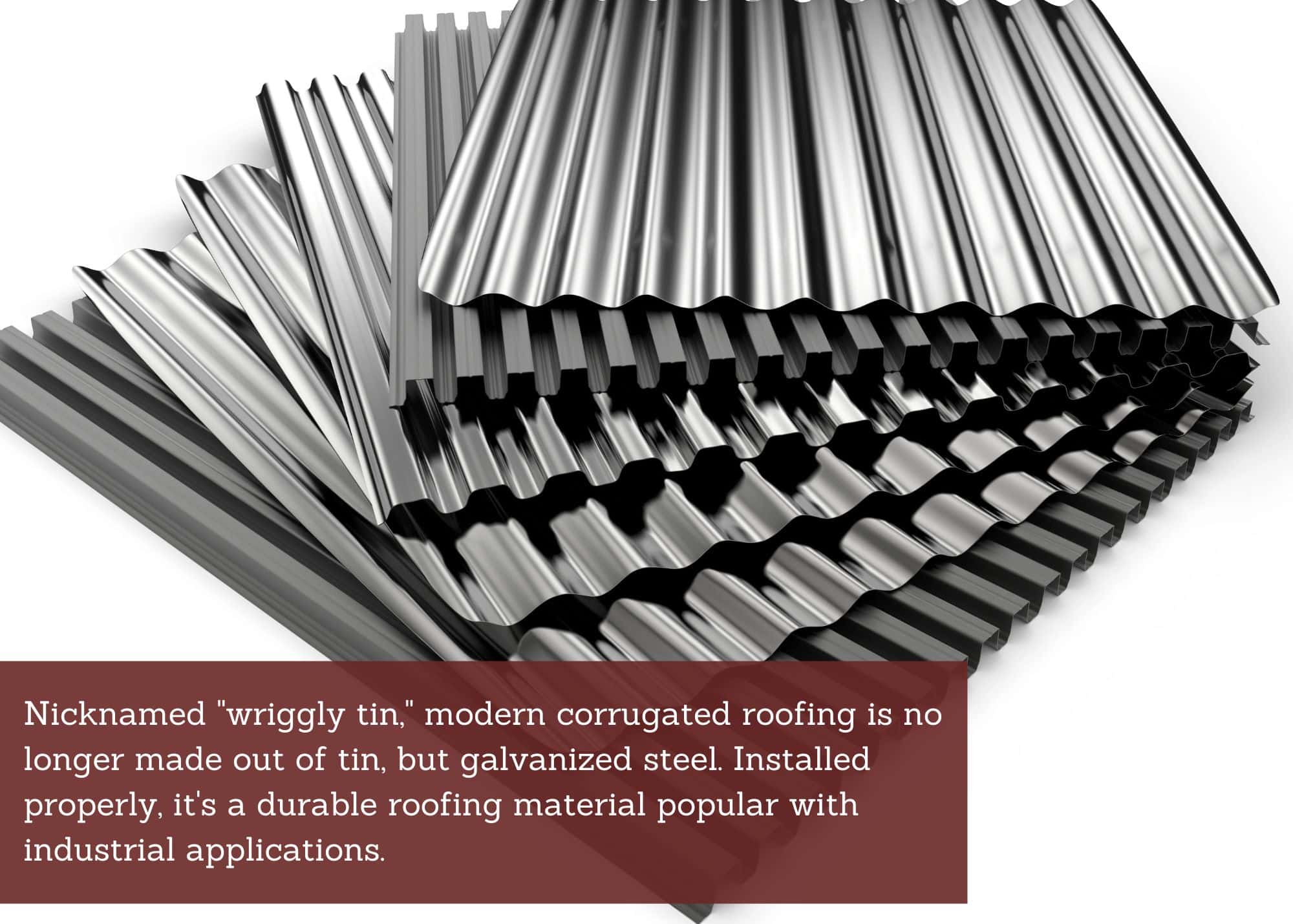
The ridges add extra points of rigidity, stopping the metal from bending and sagging under tensile and compressive forces. This same principle is why wavy potato chips are better for dipping!
Corrugated metal roofing isn’t made of tin anymore, however. The modern version is made of steel, with a coating of zinc that creates a shiny, rust-resistant surface (this process is called galvanization). It’s a popular choice for industrial, agricultural, and residential applications. For those unfamiliar with metal roofing, this is likely what most people imagine metal roofing to look like.
Pros of Corrugated Metal Roofing:
- Cost-effective: Corrugated metal roofing is one of the most affordable options, making it ideal for budget-conscious projects.
- Durability: The corrugated design adds structural strength, allowing the roof to withstand harsh weather conditions.
- Easy Installation: The simple design and lightweight nature make corrugated metal roofs easier and faster to install than other roofing types.
Cons of Corrugated Metal Roofing:
- Aesthetic Limitations: Corrugated metal roofs have a more industrial appearance, which may only suit some residential or commercial architectural styles.
- Noise: Rain or hail can create significant noise on corrugated metal roofs, which might concern some homeowners.
- Leak potential: Corrugated roofs are mounted with exposed screws, so rubber washers are used to create a watertight seal for leak prevention. Because the seals can deteriorate over time, leaks eventually form when the seals aren’t replaced.
The Case for Corrugated Metal Roofing:
- Price: Corrugated metal roofing is the cheapest option for metal roofs, typically ranging from $3.50 to $6.50 per square foot.
- Longevity: Corrugated metal roofs can last 30 to 50 years, depending on the quality of the material and installation.
- Maintenance: Corrugated metal roofs require minimal maintenance, but regular inspections are necessary to check for rust or loose fasteners.

- Aesthetics: The industrial look may only be suitable for some residential applications, limiting its aesthetic appeal.
Standing Seam Metal Roofing
Standing seam metal roofing is a roofing system with a flat area in the middle and raised vertical seams at both ends that interlock to provide a watertight seal. It’s a concealed fastener system, meaning the fasteners are not visible or exposed to the weather, making the join water-tight and long-lasting.
Standing seam roofing is the most popular type of metal roofing, being the most common type in the residential market. With many colors available, finding one to match your home’s aesthetic is easy.
Pros of Standing Seam Metal Roofing:
Sleek Appearance: The clean lines and modern look of standing seam metal roofs make them suitable for contemporary and high-end architecture.
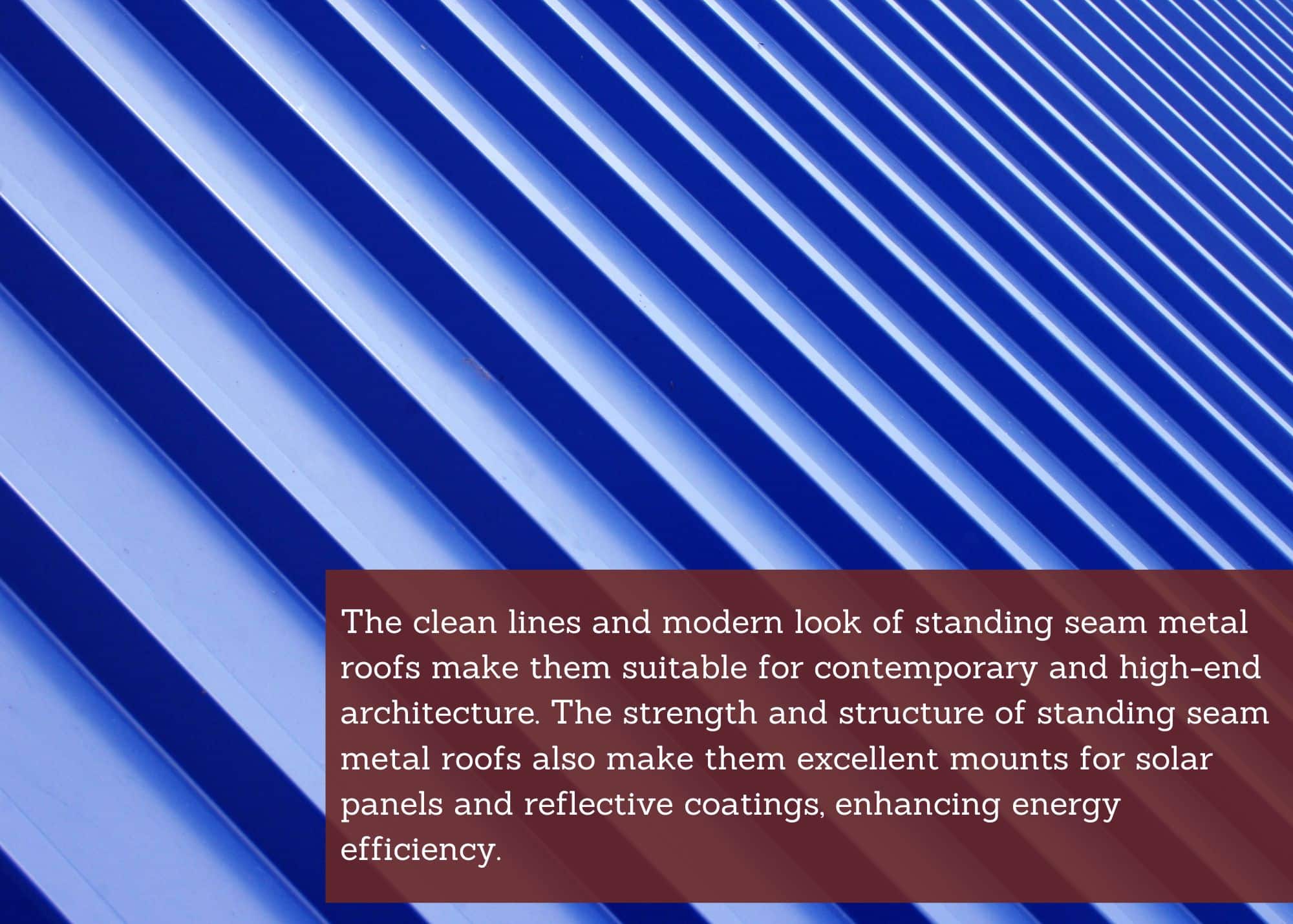
Weather Resistance: The interlocking seams provide excellent protection against water infiltration, making them highly resistant to leaks.
Energy Efficiency: Standing seam metal roofs can accommodate solar panels and reflective coatings, enhancing energy efficiency.
Cons of Standing Seam Metal Roofing:
Higher Cost: The advanced design and installation complexity make standing seam metal roofing one of the more expensive options.
Installation Complexity: Proper installation requires skilled labor, which can increase overall costs and time.
The Case for Standing Seam Metal Roofing:
Price: Standing seam metal roofing is on the higher end, with costs ranging $8 to $14 per square foot. A vented ridge is a good addition to venting to the roof.
Longevity: These roofs are exceptionally durable, often lasting 50 to 75 years with proper maintenance.
Maintenance: Standing seam metal roofs require minimal maintenance, although regular inspections ensure the seams remain intact.
Aesthetics: The sleek, modern appearance makes standing seam metal roofs a favored choice for contemporary designs, offering a high-end aesthetic appeal.
Solar-Ready: Standing Seam roofing is considered the best base for solar panels, a major component of net-zero homes.
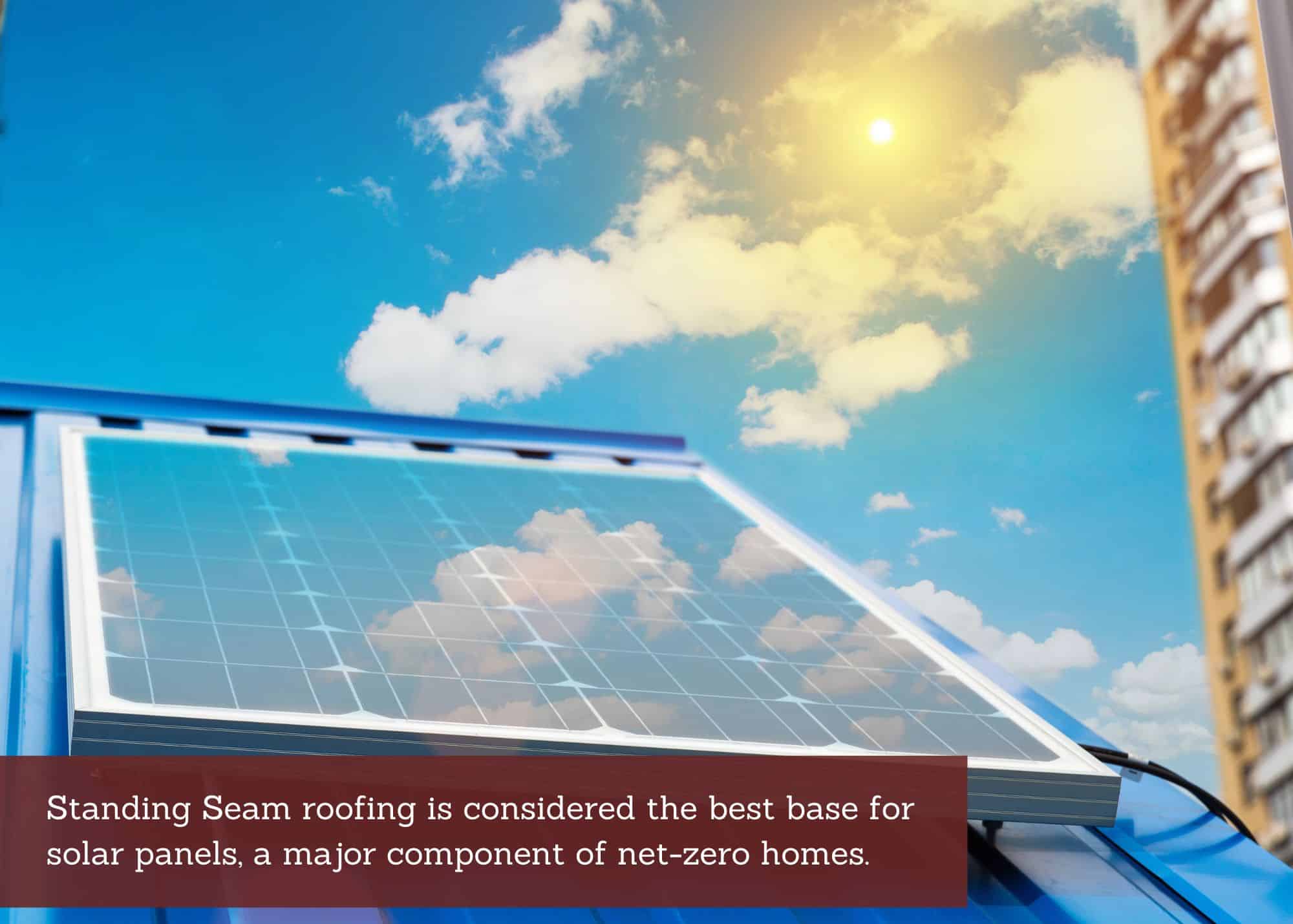
The longevity of metal roofing means that the roofing is likely to outlast the lifespan of solar panels, compared with the 20-year lifespan of traditional asphalt shingle roofing, resulting in a lower cost of ownership since the solar panels would have to be removed and reinstalled in the event the asphalt roof needs replacing.
Stone-Coated Metal Roofing
Stone-coated metal roofing combines the strength of metal with the aesthetic appeal of traditional roofing materials like shingles, tiles, or slate. The metal panels are coated with a layer of stone granules, making them look textured.
Pros of Stone-Coated Metal Roofing:
Aesthetic Appeal: Stone-coated metal roofs mimic the look of traditional roofing materials, offering a wide range of styles and colors, making them an excellent choice for homeowners seeking the durability of metal without sacrificing curb appeal.
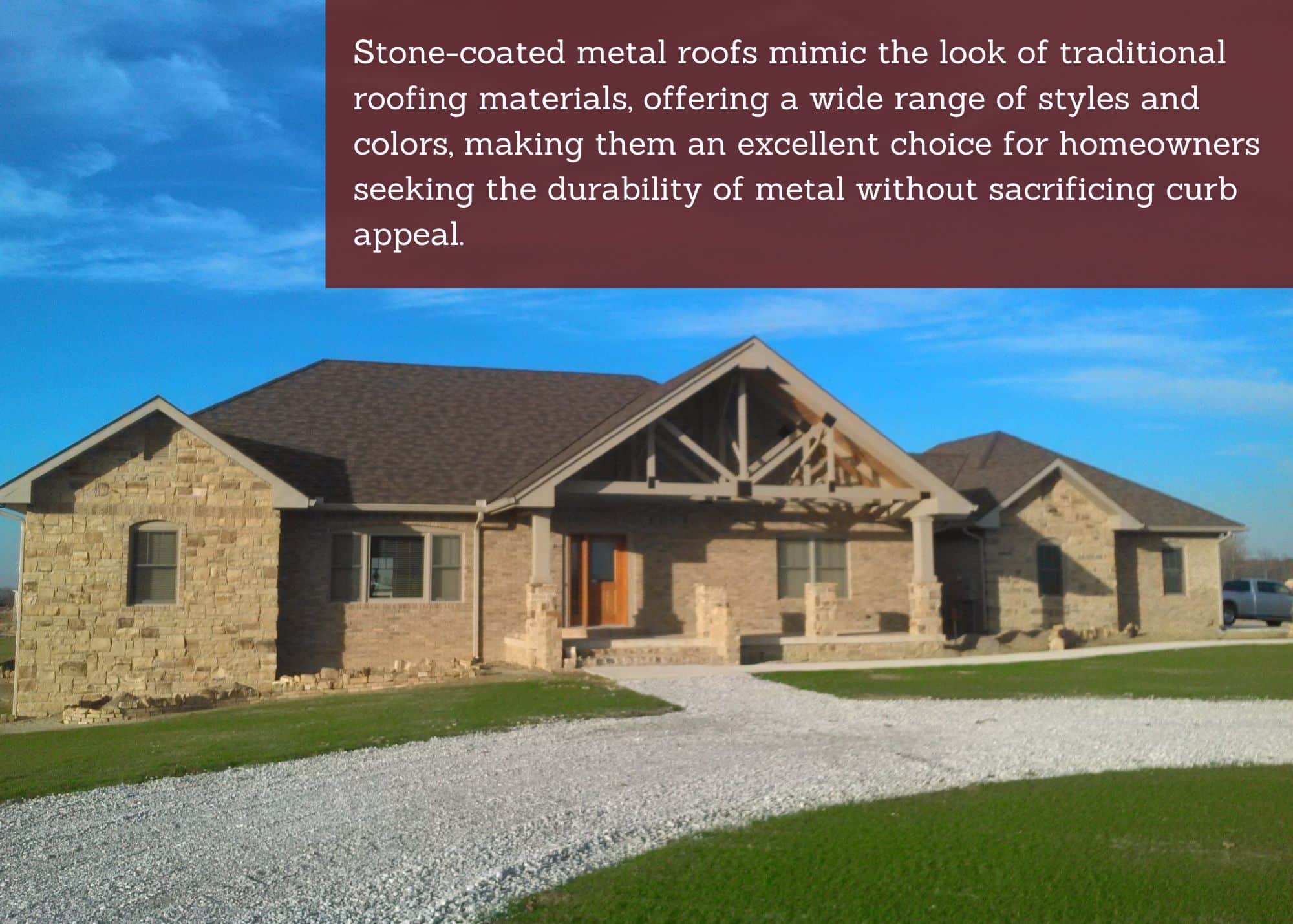
Durability: These roofs are highly resistant to weather elements, including wind, hail, and fire. The stone coating adds an extra layer of protection against corrosion.
Lightweight: Compared to traditional roofing materials, stone-coated metal roofs are lightweight, reducing the structural load on a building.
Cons of Stone-Coated Metal Roofing:
Cost: Due to the coating process, stone-coated metal roofing is on the higher end of the price spectrum, with costs ranging from $8 to $18 per square foot, depending on the style and manufacturer.
Complex Installation: The installation process requires skilled labor, which increases installation costs.
Coating Longevity: While proper installation and maintenance will guarantee the life of your stone-coated metal roof, a poorly installed roof is not only at risk of leaking but also damaging or losing its stone coating, exposing the metal underneath.
The Case for Stone-Coated Metal Roofing:
Longevity: With proper installation and maintenance, stone-coated metal roofs can last 40 to 70 years, making them a long-lasting option.
Maintenance: These roofs require minimal maintenance, but periodic inspections ensure the stone coating remains intact.
Aesthetics: The variety of styles and colors available allows homeowners to achieve the desired look, enhancing the property's overall aesthetic.
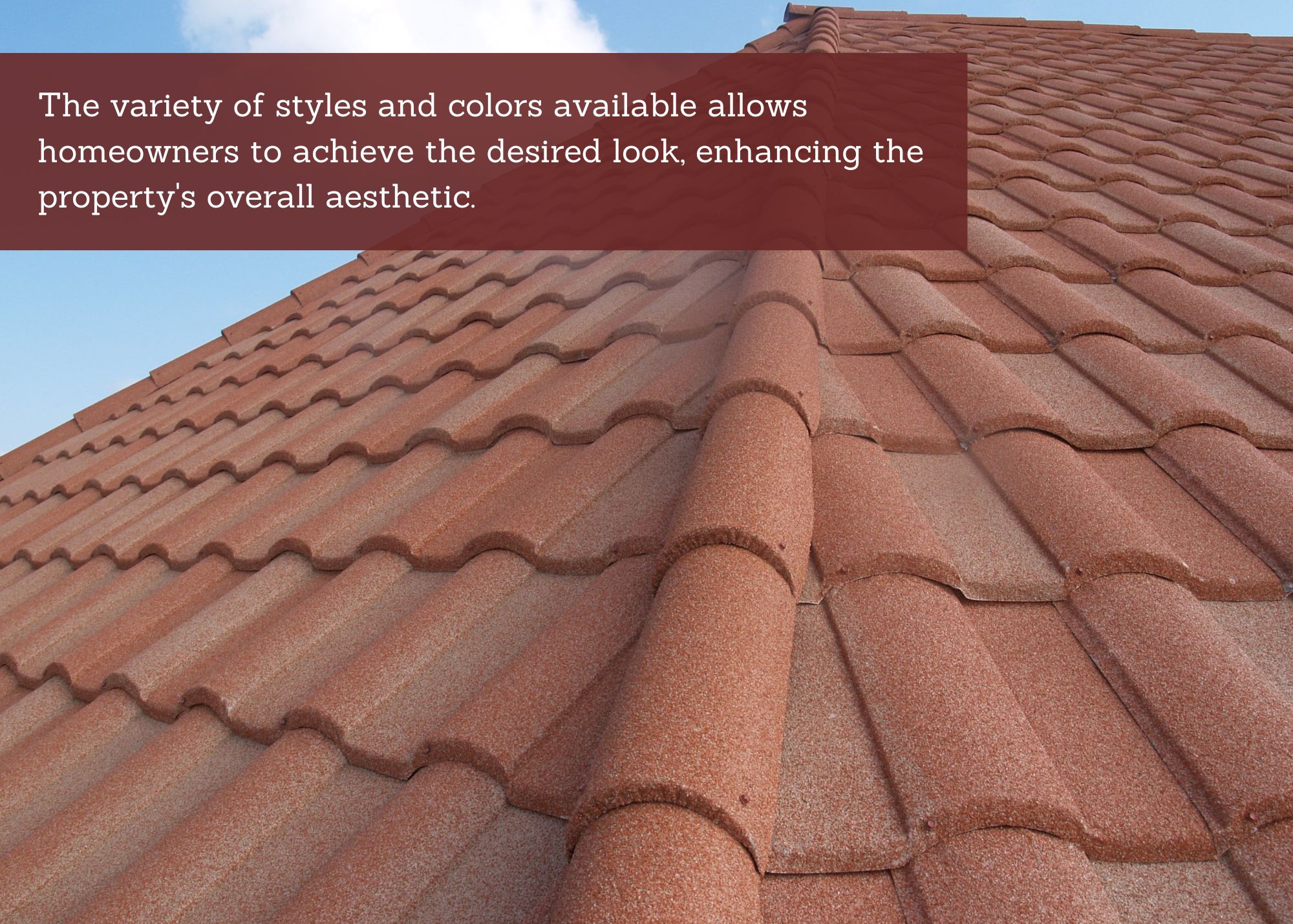
Conclusion
As you can see, installing metal roofing has many benefits despite the higher cost! A properly installed metal roof not only gives you peace of mind but also increases the value and desirability of your home. You can also pass your house to your children without worrying about roof replacement. Metal roofs are an excellent investment!
While this blog compared metal roofing options, we briefly touched on related topics that you could learn more about in these blogs:
- Answering the 8 Most Common Questions About Stone-Coated Steel Roofing
- 7 Reasons Smart Homeowners are Building Energy-Efficient Homes
- ICF Construction: What It Is, How It Works, and 6 Reasons You Need It
At K Graber Construction, we can build anything! Whether it’s a new roof, a pole barn, or a new home, we will work with quality, integrity, and communication. When you work with us, you can be sure that we will complete your project as promised.
Contact us today to find out how we can build your next project!
